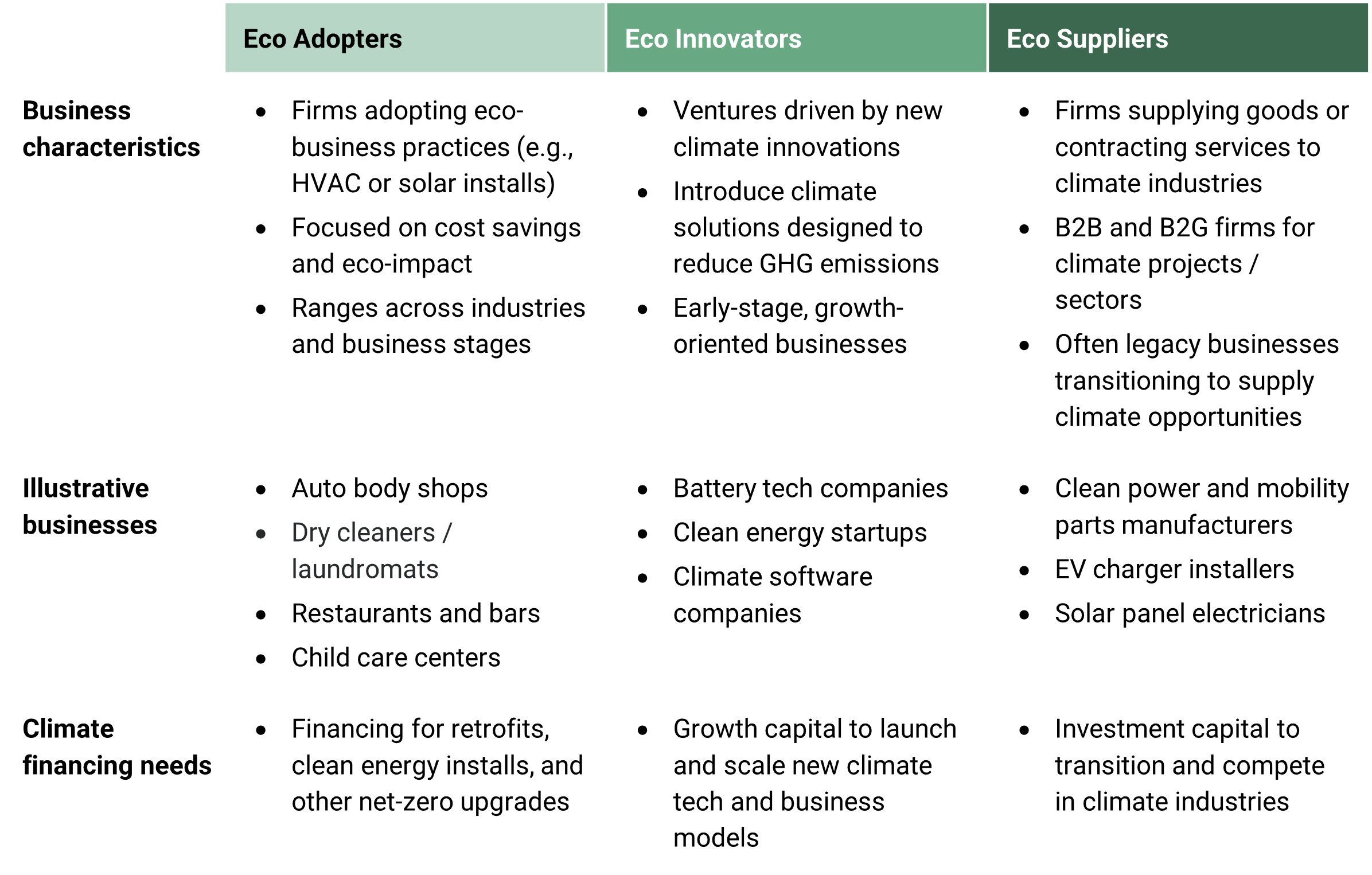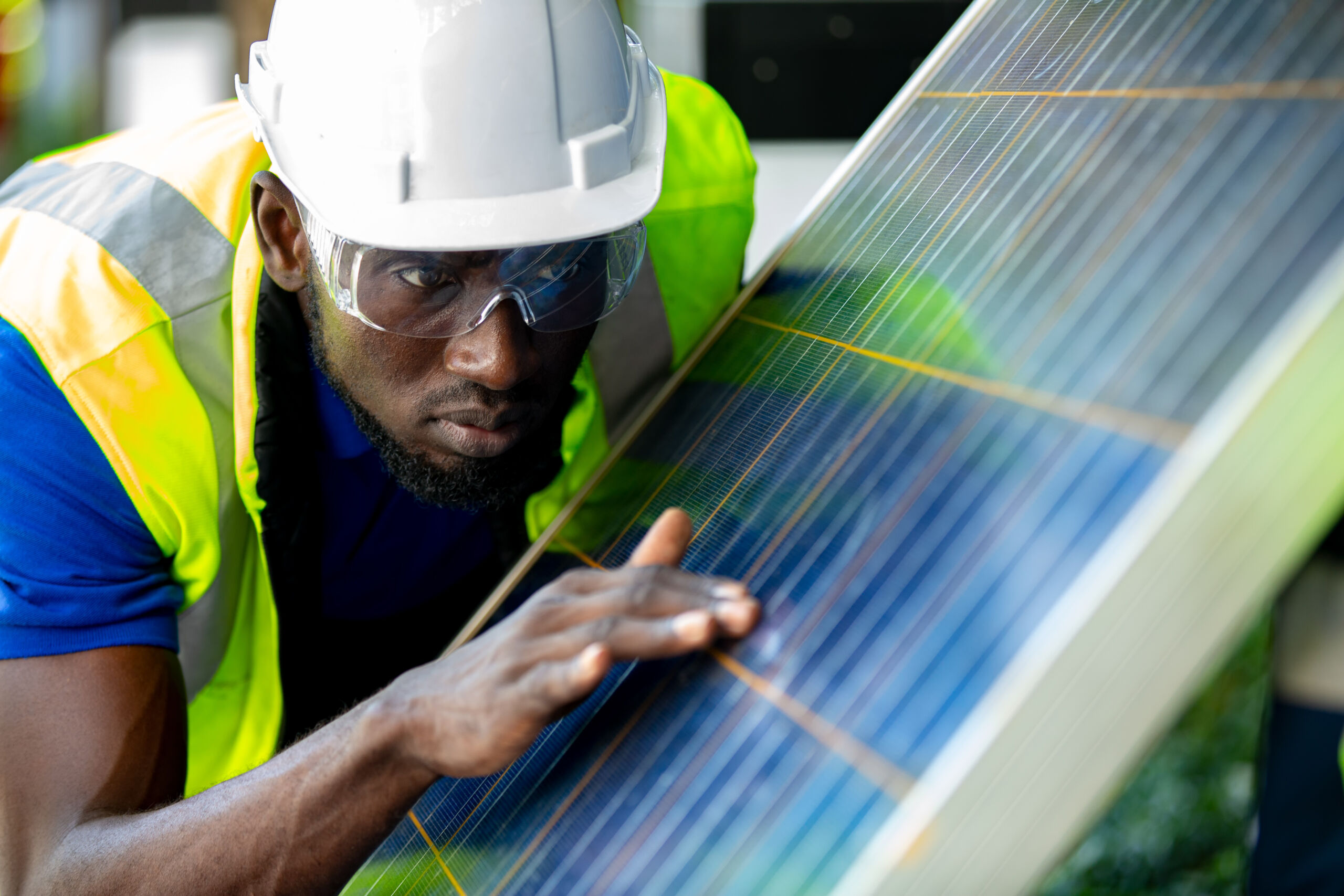Framing how this $27 billion in funding to create a national network around climate and clean energy projects should support and benefit small businesses, especially those in communities historically left behind.
Share this post
What is the Greenhouse Gas Reduction Fund?
The Greenhouse Gas Reduction Fund (GGRF) is a $27 billion program investing in climate action in communities across America. Authorized through the Inflation Reduction Act and administered by the Environmental Protection Agency (EPA), this program will mobilize public and private capital to address the climate crisis and drive economic growth and prosperity.
In April 2024, the EPA announced grant awards to financial institutions and investor coalitions to establish a network of community-based and green lenders that will be relied upon to expand access to climate finance, particularly in historically underserved communities. The EPA designed the GGRF into three distinct programs:
- National Clean Investment Fund (NCIF): The $14 billion National Clean Investment Fund is designed to build a national clean financing market for private sector investors, businesses, community organizations, and others to deliver clean technology projects. The three selected applicants will direct at least 40 percent of NCIF funds to low-income and disadvantaged communities.
- Clean Communities Investment Accelerator (CCIA): The $6 billion Clean Communities Investment Accelerator awards five selected applicants to form hubs with funding and technical assistance for community-based climate lenders. The CCIA targets investments exclusively in low-income and disadvantaged communities through community development financial institutions (CDFIs), credit unions, minority depository institutions, and other alternative lenders.
- Solar for All: The $7 billion Solar for All program awards 60 selected applicants – including states, territories, Tribal governments, municipalities, and eligible nonprofit recipients – to expand the number of low-income and disadvantaged communities primed for distributed solar investment.
How can the GGRF impact small businesses?
Across these programs, the EPA has designed the GGRF to achieve dual goals of driving the net-zero transition while fostering economic development, especially among historically underserved communities. Centered on our mission to help every small business realize its potential, Next Street is focused on how small businesses can tap into this once-in-a-generation climate investment.
The climate crisis is becoming increasingly important for small businesses and their communities. A 2023 small business survey indicated that a growing number of small businesses are looking to reduce greenhouse gas emissions. These “Eco Adopters” seek to implement new technologies and sustainable business practices in their operations to reduce their carbon footprint. This has implications for local communities, as small and mid-sized businesses contribute 44% of U.S. economic activity and nearly half of the total U.S. greenhouse gas emissions.
Additionally, small businesses play a critical role in developing solutions to address the climate crisis. Venture-backed “Eco Innovators” bring about new technologies and business models to address climate mitigation and adaptation. Further, “Eco Suppliers” contract services and supply goods for new climate industries like clean energy and electric vehicle manufacturing. Together, these businesses operate within what Next Street regards as the New Economy, a fast-growing segment of the U.S. economy comprised of strategic sectors like climate and sustainable infrastructure stimulated by the recent influx of federal investments.
To make the net-zero transition and compete in the New Economy, small businesses need access to capital from financial institutions, incubators, and community development funds. “Eco Adopters” require financing to implement new technologies and sustainable business practices to reduce their carbon footprints. Further, “Eco Innovators” and “Eco Suppliers” require investment capital to finance new business models, retool business operations, and fuel growth in these rapidly evolving sectors. Figure 1 summarizes this spectrum of climate-oriented small businesses and their growing financing needs.
Figure 1: Spectrum of small businesses in the net-zero transition

What do small businesses need to access green lending?
We’ve framed the types of small businesses looking to reduce their carbon footprint and participate in the New Economy. Now, let’s discuss the ecosystem of support required to facilitate green lending and investments to small businesses through the GGRF.
First, let’s start with financial institutions. Green banks and community financial institutions now have the opportunity to access vast amounts of low-cost GGRF capital to invest in qualifying projects in communities. To be successful in leveraging this moment, lenders and investors will need to determine how they can triangulate the flow of GGRF funding, their products, and the opportunities for their customers and communities.. When making this assessment, these institutions should look for new strategic opportunities to deploy capital to benefit small businesses in their communities. This will entail assessing how to best position themselves to identify and originate demand, and develop tailored products and services, underwriting capabilities, impact tracking and measurement, and go-to-market approaches to ensure small businesses benefit relative to the EPA’s GGRF objectives.
Additionally, asset managers and institutional investors should consider new approaches to investing in GGRF capital pools and qualifying projects. A stated EPA objective for the GGRF centers on mobilizing private capital alongside the GGRF’s public investments. This type of capital formation may come in different forms, including co-investing with GGRF capital and into complementary vehicles like those offering credit enhancements. Asset managers and investors should look to fill gaps in commercial lending and investments where EPA eligibility requirements may leave out small businesses. Further, the community development sector supporting investment in qualified projects should explore potential opportunities in carbon markets to attract corporate involvement, and ways to engage with municipal entities that have a track record of funding local projects tapping institutional capital.
Business support and community organizations that work directly with small businesses also play an important role as they coordinate access to business services, technical assistance, and other support to keep small businesses going. These organizations will need to adapt the services they provide to support small businesses in meeting their net-zero goals and stepping into the New Economy. This includes introducing new small business training on accessing the GGRF capital for qualifying projects and advising on new business strategies and approaches to take advantage of market shifts in emerging climate industries.
Finally, the ecosystem would benefit from a coordinated marketplace for businesses to access green lending and investments enabled by the GGRF. Digital ecosystem platforms equip financial institutions to power the capital marketplace and business support organizations to provide small businesses with relevant technical assistance. Such a digital marketplace, supported by a concerted marketing approach, can facilitate small business deal origination and match it with lenders and investors seeking to deploy GGRF capital.
How Next Street can help?
As the GGRF awardees develop their work plans, Next Street can be an essential partner in (i) connecting the dots and bringing stakeholders together to support small businesses, (ii) assessing community ecosystem needs to identify investable opportunities, and (iii) positioning institutions for opportunities in the New Economy.
From our work with New York City Economic Development Corporation preparing M/W/DBEs to compete for offshore wind construction projects to our recent Appalachian small business capital report, we offer insights and design solutions to equip small businesses for the green economy transition. Additionally, over the last few years, we’ve helped many lenders assess their climate-oriented financing, identifying opportunities to elevate small business lending as part of their broader portfolio mix.
To unlock the transformative power of the New Economy and create a more sustainable, equitable society, we will need new ways of thinking to expand access to capital and pair it with new business support programs and partnerships. No matter what, we know the country’s net-zero transition should and must include small businesses.
To learn more about Next Street’s work and thinking about the GGRF and the New Economy, contact the authors Rian Irani (rirani@nextstreet.com) and Spencer Lau (slau@nextstreet.com).
